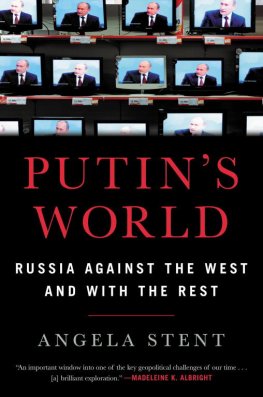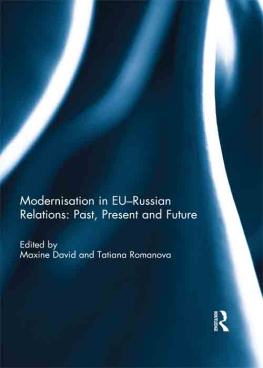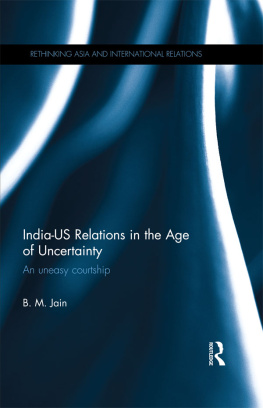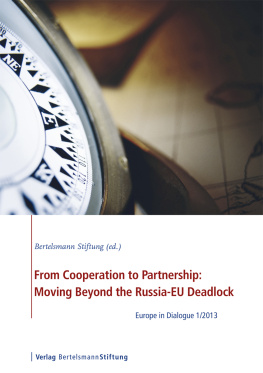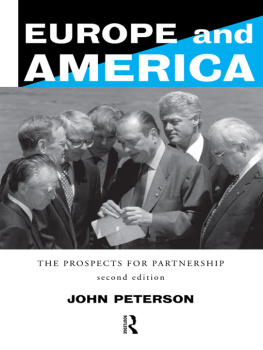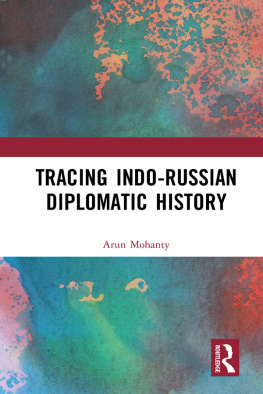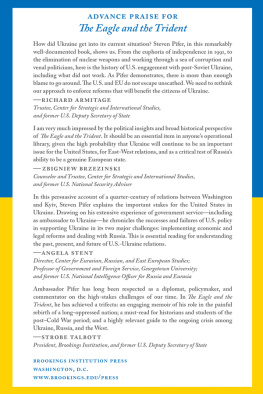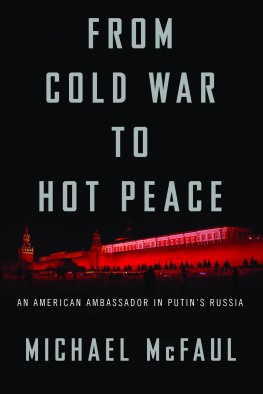
The Limits of Partnership
The Limits of Partnership
U.S.-RUSSIAN RELATIONS
in the
TWENTY-FIRST CENTURY
Angela E. Stent
Princeton University Press
Princeton and Oxford
Copyright 2014 by Angela E. Stent
Requests for permission to reproduce material from this work should be sent to Permissions, Princeton University Press
Published by Princeton University Press, 41 William Street, Princeton, New Jersey 08540
In the United Kingdom: Princeton University Press, 6 Oxford Street, Woodstock, Oxfordshire OX20 1TW
press.princeton.edu
Jacket Photograph: U.S. President Barack Obama shakes hands with Russias President Vladimir Putin in a bilateral meeting during the Summit, June 18, 2012, in Los Cabos, Mexico. Courtesy of AP Photo/Carolyn Kaster.
All Rights Reserved
Library of Congress Cataloging-in-Publication Data
Stent, Angela.
The limits of partnership : U.S.-Russian relations in the twenty-first century / Angela Stent.
pages cm
Summary: The Limits of Partnership offers a riveting narrative on U.S.-Russian relations since the Soviet collapse and on the challenges ahead. It reflects the unique perspective of an insider who is also recognized as a leading expert on this troubled relationship. American presidents have repeatedly attempted to forge a strong and productive partnership only to be held hostage to the deep mistrust born of the Cold War. For the United States, Russia remains a priority because of its nuclear weapons arsenal, its strategic location bordering Europe and Asia, and its ability to supportor thwartAmerican interests. Why has it been so difficult to move the relationship forward? What are the prospects for doing so in the future? Is the effort doomed to fail again and again? Angela Stent served as an adviser on Russia under Bill Clinton and George W. Bush, and maintains close ties with key policymakers in both countries. Here, she argues that the same contentious issuesterrorism, missile defense, Iran, nuclear proliferation, Afghanistan, the former Soviet space, the greater Middle Easthave been in every presidents inbox, Democrat and Republican alike, since the collapse of the . Stent vividly describes how Clinton and Bush sought inroads with Russia and staked much on their personal ties to Boris Yeltsin and Vladimir Putinonly to leave office with relations at a low pointand how Barack Obama managed to restore ties only to see them undermined by a Putin regime resentful of American dominance and determined to restore Russias great power status. The Limits of Partnership calls for a fundamental reassessment of the principles and practices that drive U.S.-Russian relations, and offers a path forward to meet the urgent challenges facing both countries Provided by publisher.
Includes bibliographical references and index.
ISBN 978-0-691-15297-4 (hardback)
1. United StatesForeign relationsRussia (Federation) 2. Russia (Federation)Foreign relationsUnited States. 3. United StatesForeign relations1989 I. Title.
E183.8.R9S836 2014
327.73047dc23 2013024484
British Library Cataloging-in-Publication Data is available
This book has been composed in Baskerville 120 Pro and Didot
Printed on acid-free paper.
Printed in the United States of America
1 3 5 7 9 10 8 6 4 2
To Danny, Alex, and Rebecca
Introduction
The two summits were a study in contrasts. In June 2010 Barack Obama invited Russian president Dmitry Medvedev to a favorite eatery, Rays Hell Burgers, in Arlington Virginia, for a cheeseburger summit. The two presidents rolled up their sleeves, dined on gourmet burgers, and exchanged jokes in a friendly atmosphere. The summit highlighted the two young postCold War leaders, both trained as lawyers, and the new high-tech U.S.-Russian relationship. Obamas resethis move to improve ties with Moscowwith its relaxed body language was on full display. After the two leaders announced a partnership for innovation, Medvedev flew on to Silicon Valley, where he met with young entrepreneurs, and proudly opened his first Twitter account.
Two years later it was a very different scene. In June 2012 Obama met Vladimir Putin on the sidelines of the The reset appeared to be on ice.
Then there was the summit that never was. Obama and Putin were scheduled to meet in Moscow in September 2013. But weeks before the meeting Edward Snowden, a disaffected 30 year-old contractor for the U.S. National Security Agency, landed in Moscow carrying a huge trove of classified information. The Russians took their time assessing the situation, but eventually granted him political asylum, despite repeated U.S. request for his extradition. The White House then lost no time in canceling the
These events highlight a basic fact of life since the Soviet Union disappeared on Christmas Day 1991. It has been a constant challenge for Washington to move forward on a constructive and productive agenda with Russia. Periods of dialogue, progress, and optimism have been followed by tense periods, standoffs, mutual criticism, and pessimism. Both Bill Clinton and George W. Bush began their administrations with high expectations about improving ties with Russia, only to acknowledge at the end of their terms that the relationship had seriously deteriorated. The Obama reset was over by the end of his first term. Moreover, Washingtons repeated cycles of high hopes followed by disappointments have been mirrored in Moscow. As a close advisor to Presidents Boris Yeltsin and Vladimir Putin put it, Every Russian President has begun his term with high expectations for the relationship and every term ends in disappointment because the United States has disregarded Russias interests.
In fact, U.S.-Russian relations since the Soviet collapse have gone through not one, but four resets. The first, albeit brief and partial, was during the last year of George H. W. Bushs presidency when postcommunist Russia was reborn. The second was President Bill Clintons more ambitious attempt to refashion the entire relationship in the 1990s. The third reset was Vladimir Putins initiative when he was the first foreign leader to call George W. Bush after the 9/11 attacks and offer moral and material support for the antiterrorist campaign, with the expectation that Russia would become the United States full-fledged partner. The fourth reset was initiated by Obama, when he pledged to renew and improve relations with Russia after the 2008 Russia-Georgia War that had brought bilateral ties to a new low. Russia believes that the United States rebuffed its post-9/11overtures during the Bush administration and views the Obama reset as a necessary American course correction, not a joint project.
This book seeks to answer basic questions about the relationship between these two nations: Why has it been so difficult to develop a productive and more predictable postCold War U.S.-Russian partnership? What areas of this relationship have worked best? What have been most problematic? And why? Why are American and Russian priorities so often misaligned? What would it take to redesign this relationship and move it beyond what at best is a limited and selective partnership? These questionsand their answershave far-reaching global implications.
Moscows importance for Washington inevitably changed after the Soviet collapse. The United States had viewed the ) materials, its substantial albeit weakened military, and its remaining relationships with states that America considered unsavorypossessed the ability to thwart American interests. Every American administration since 1992 has recognized that a key interest in dealing with Russia has been to prevent it from acting as a spoiler in areas where the United States has vital interestsbe they Iran, Iraq, Afghanistan, or the Greater Middle East.
Next page


